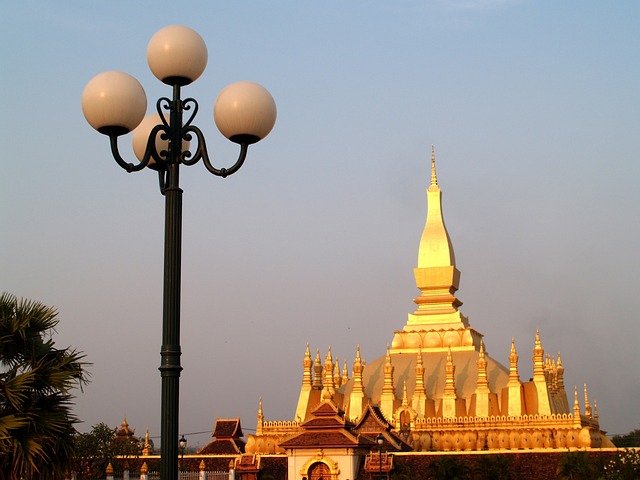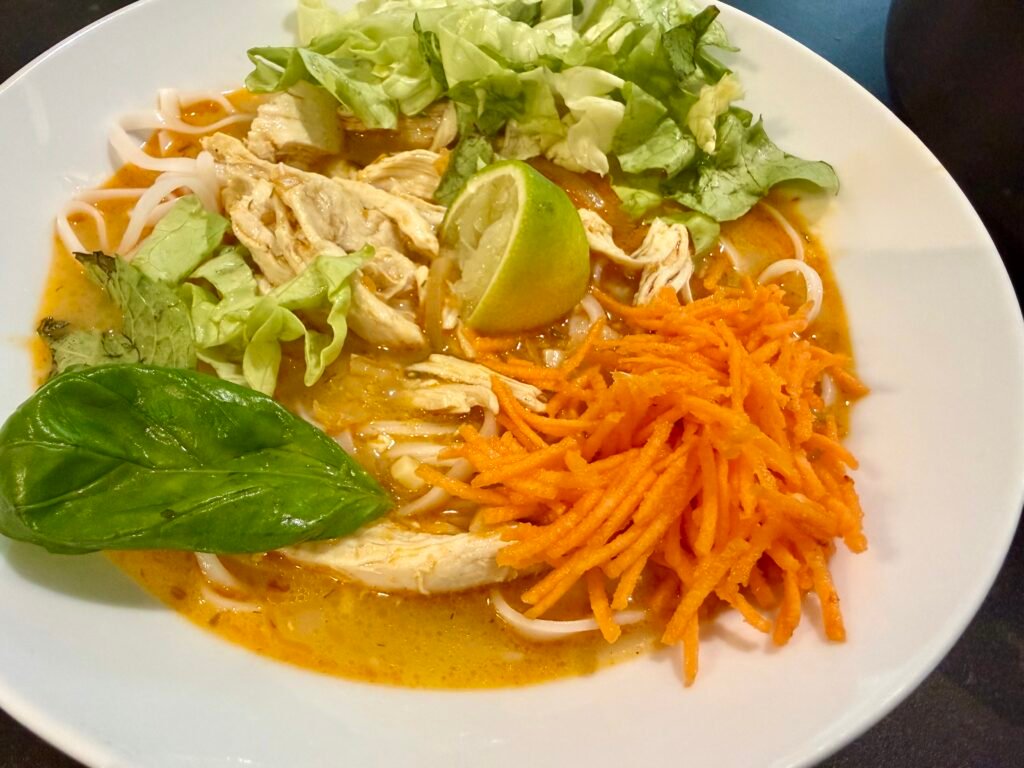Laos, a landlocked country in Southeast Asia, is a hidden gem that fascinates with its ancient history and cultural richness. Formerly known as Lan Xang (the Kingdom of a Million Elephants), Laos flourished between the 14th and 18th centuries before becoming a French colony in the 19th century. The country gained its independence in 1953 and today retains visible traces of its past through its colonial architecture, Buddhist temples and traditions. Theravāda Buddhism plays a central role in daily Laotian life, and the culture is deeply rooted in spiritual practices, festivals like Boun Pha Vet (celebration of the reincarnation of Buddha), and ceremonies marked by offerings to temples.
Laos is also famous for its artisan villages where ancient traditions are perpetuated, such as silk weaving and textile production. The simplicity and tranquility of Laotian life make it a perfect destination for those looking to get away from modern stress.
Traditional Gastronomy and Gluten Free Options
Laotian cuisine is renowned for its fresh and spicy flavors, often based on simple, natural ingredients. Unlike some neighboring cuisines, Lao cuisine often uses sticky rice, but many dishes are naturally gluten-free or can easily be adapted. Dishes are often accompanied by fresh herbs, chili peppers and vegetables, reflecting the harmony between spicy, sweet and tangy flavors.
Here are some gluten-free Laotian dishes:
- Laap : A salad of minced meat or fish, mixed with fresh herbs, shallots, lime and spices. This dish, often served with sticky rice or vegetables, is naturally gluten-free.
- Tam mak houng : A salad of grated green papaya, seasoned with chili, fish sauce and lime juice. Refreshing and spicy, this salad is an ideal gluten-free option.
- Khao piak sen : A rice noodle soup in a clear broth, often garnished with chicken, cilantro, and lime, perfect for lovers of gluten-free comfort food.
- Mok pa : Steamed fish in banana leaves with herbs and spices, a simple but very tasty dish.
These dishes feature fresh, spicy local ingredients, perfect for a gluten-free diet.
The Must-See Things to Visit in Laos
Laos is a country of majestic landscapes and historical sites that delight travelers in search of authenticity. Here are some must-sees to explore:
- Luang Prabang : Listed as a UNESCO World Heritage Site, this city is full of Buddhist temples and monasteries. The monks' morning almsgiving ceremonies (Tak Bat) are a unique spiritual moment not to be missed.
- Kuang Si Falls : Located near Luang Prabang, these waterfalls offer pools of turquoise water ideal for swimming in a breathtaking natural setting.
- Vientiane : The capital of Laos is known for its majestic temples like Pha That Luang , the national symbol of Laos, and for its relaxed atmosphere on the banks of the Mekong.
- The 4000 Islands (Si Phan Don) : This region, located in the south of Laos, is a true paradise for nature lovers. There you will find impressive waterfalls and islands where time seems to stand still.
These sites offer an immersion in the preserved nature and Buddhist spirituality that characterize Laos.



